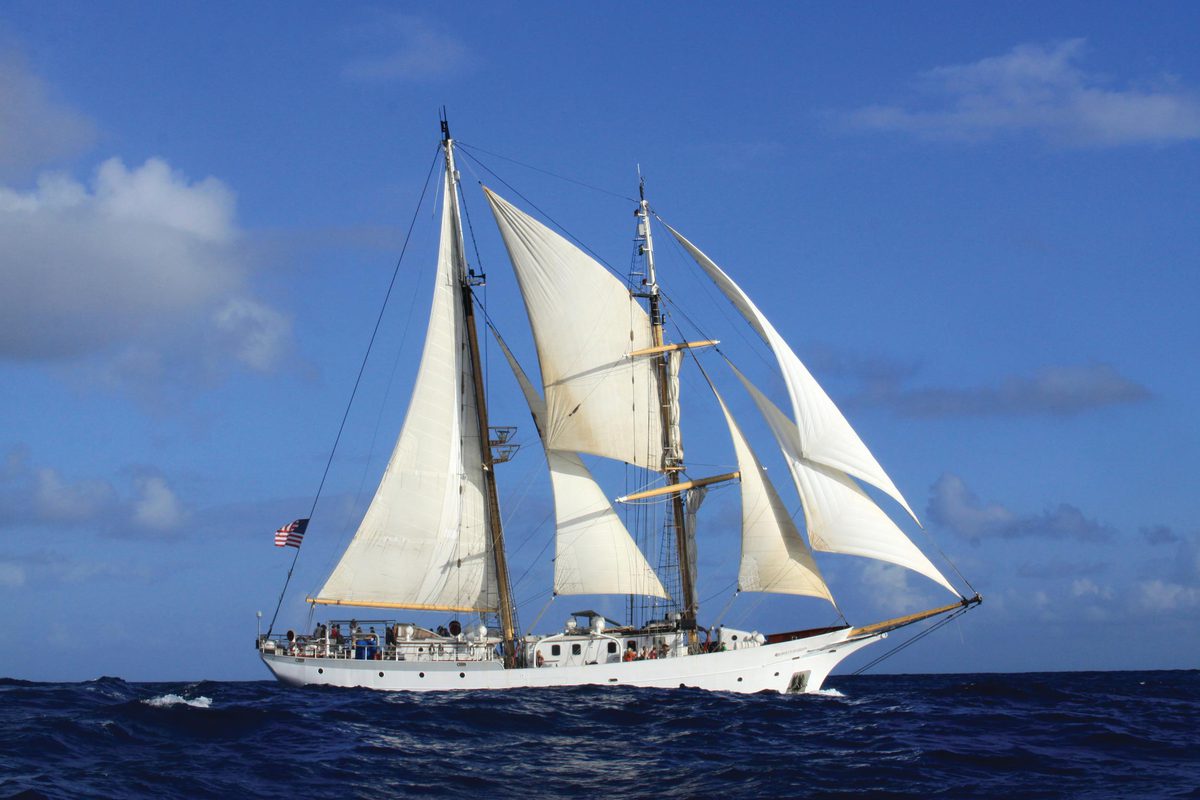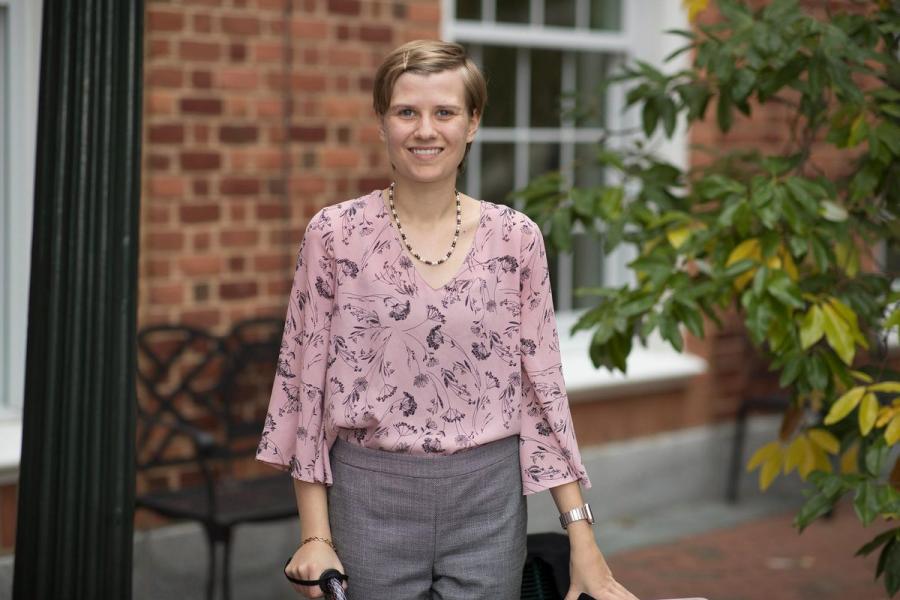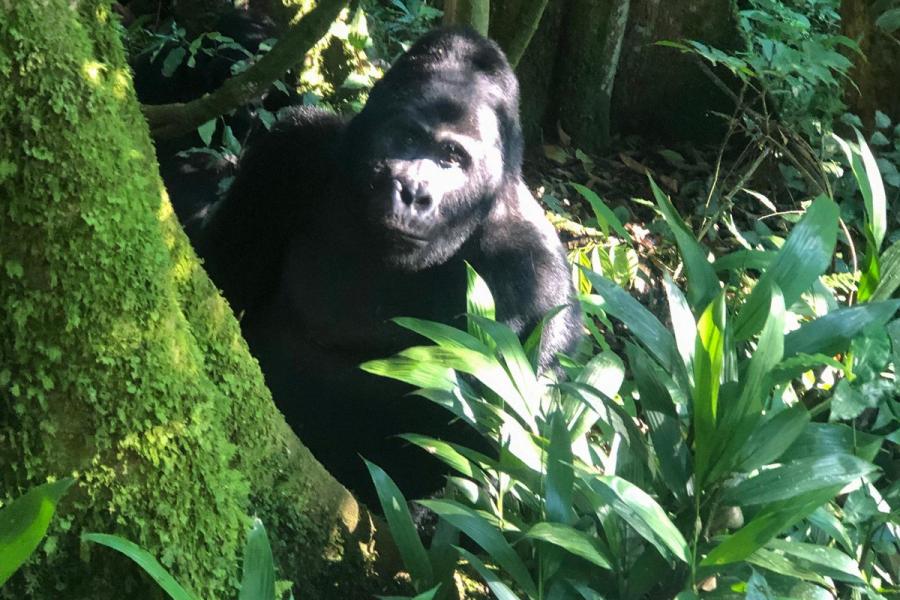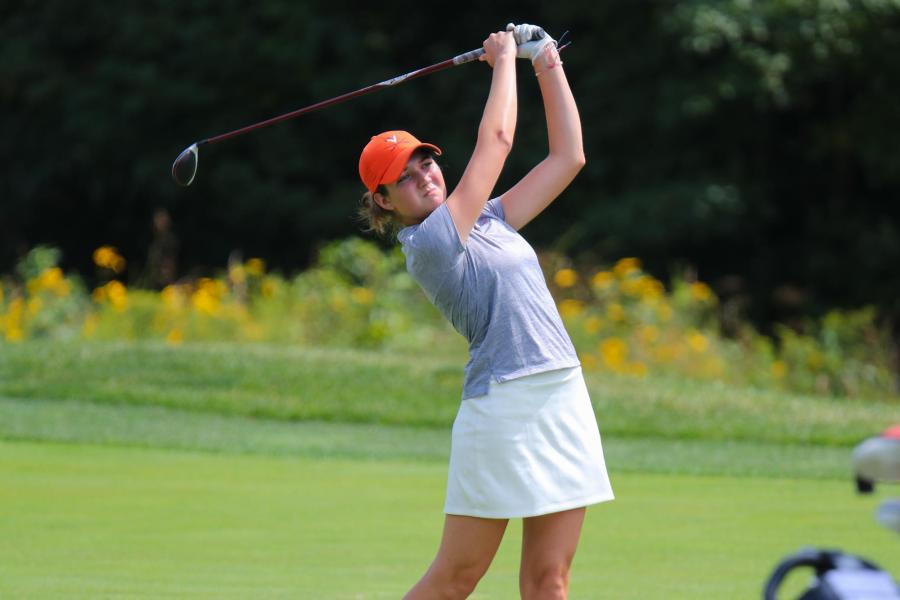Katherine Webber, a third-year environmental sciences major at the University of Virginia minoring in global sustainability, recently completed a six-week learning adventure aboard a tall ship research vessel, the SSV Robert C. Seamans, in the South Pacific. She conducted field research for NASA’s Goddard Space Flight Center on a newly formed volcanic island, collected ocean data while at sea, and learned about Polynesian culture.
The program, called SEA Semester, is a study-abroad program run by Sea Education Association, located in Woods Hole, Massachusetts.
Webber and several other students from U.S. colleges boarded the 134-foot brigantine on Sept. 24 in American Samoa. The ship served as their home, classroom and laboratory as they voyaged to New Zealand, with field research stops in Tonga and Fiji. The students also sailed and navigated the ship under the guidance of a professional crew.
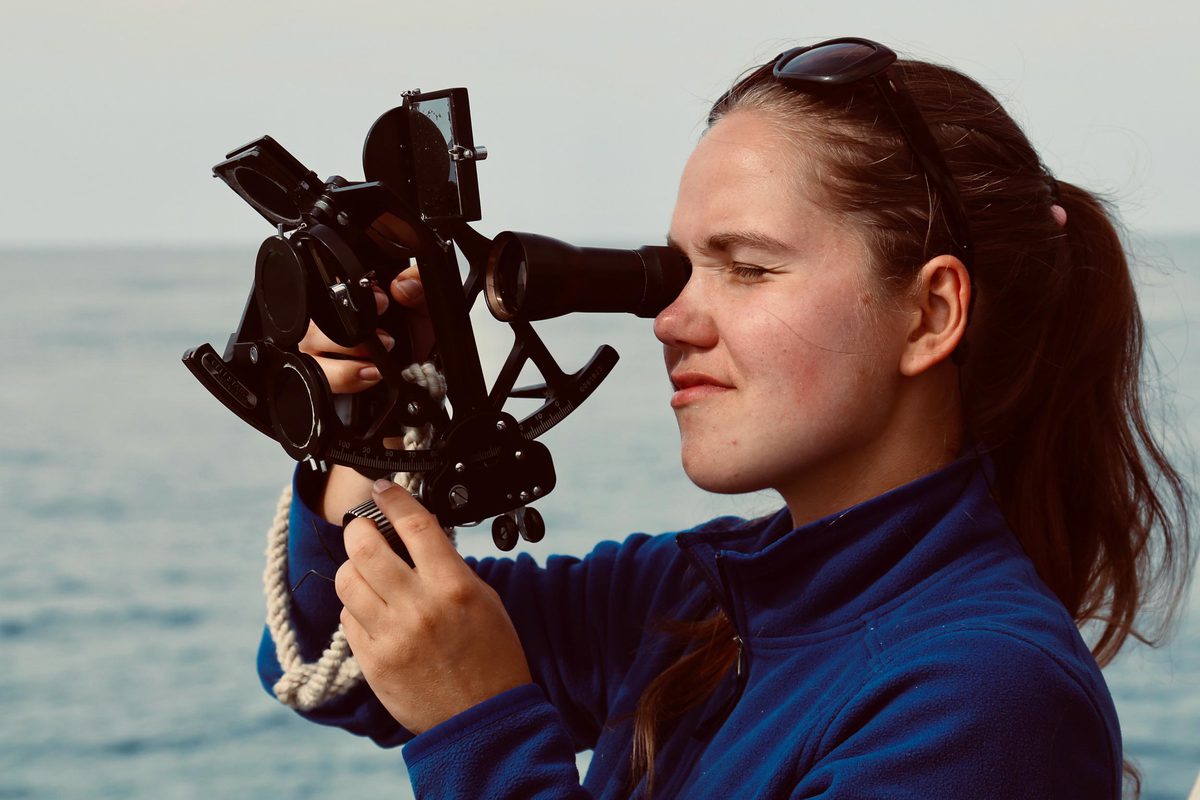
The program allows students to study the environmental challenges faced by remote Pacific islanders and explore sustainable solutions for island cultures and ocean ecosystems. Prior to the trip, the students received four weeks of preparatory coursework at SEA Semester’s Woods Hole campus.
Webber recently described her experience for readers of UVA Today.
Q. How did you become part of this adventure?
A. I have always been fascinated by tall ships and have wanted to learn how to sail them since I was little, so I knew I had to do this program. I chose to do the “Sustainability in Polynesian Cultures and Ecosystems” program because I wanted to learn about an ecosystem that was very different to the one at home in Virginia, as well as learn about sustainability.
When the time came to apply, I was so nervous because SEA uses rolling admissions and I was worried that all the spots would be full. Two weeks later, however, I received a phone call notifying me that I had been accepted.
I was excited, but didn’t commit straight away. Studying abroad in the fall means missing being in the Cavalier Marching Band [Webber plays the clarinet], the Third Year Ring ceremony, and how beautiful Grounds is in the fall. I needed to decide if doing this program was worth everything I would miss on Grounds. After speaking with an alumna about the program, however, I knew that this was an experience I needed to have before graduating.
Q. What was it like to live at sea aboard a tall ship?
A. On my trip, 40 people were packed into the Robert C. Seamans for six weeks. The only personal space were the bunks and limited storage compartments. For me, that consisted of one shelf that ran the length of my bunk, one shelf in a cabinet, and a drawer.
During this time, my classmates and I weren’t just passengers; we were actual members of the crew, sailing the ship across the Pacific. This means that we were split into three different watch groups, with each group working six hours on and 12 hours off. The days were split into four watches that each group rotated through: morning (0700-1300), afternoon (1300-1900), evening (1900-0100), and dawn (0100-0700). The watch schedule took some time to get used to, and most of us had to accept that sleep would often have to be broken into three- or four-hour patches throughout the day.
Though there was a lot of hard work, there were also plenty of fun moments. Card games were always happening in the afternoon in the salon (dining area), and when the waves were choppy, the head rig became our own personal roller coaster. In the evenings, there was always music on the quarterdeck (banjo, mandolins, guitars and the ukulele) and the housetops were the best places to read a good book.

The scariest and most rewarding task, however, was going aloft. The view from up there was incredible, as you could watch the ship wander across the Pacific below you.
Living on a ship took cleaning to a whole new level. Chores were designated to each watch – cleaning the soles (floors), heads (toilets), showers, deck and the galley (kitchen). Every week, we also had field day, where we gave the whole ship a deep clean. It may sound tedious, but those days were a lot of fun because they were the only times that we were allowed to listen to music. Cleaning the ship like this is also extremely important, as our health depends on having a clean ship.
Q. What were some of the projects you worked on at sea?
A. While at sea, some of the members of each watch were assigned to work in the lab. There we collected a variety of oceanographic data so we could learn more about the Pacific Ocean.
The morning and evening watches were deployment watches. During these periods, depending on the time of day, we deployed sensors to determine water temperature and salinity at a variety of depths, from the surface to deeper than 500 meters, and collected phytoplankton and zooplankton.
On afternoon and dawn watches, we processed and analyzed the data that was collected during the mornings and evenings. We determined alkalinity and did counts to identify zooplankton and phytoplankton species.
We also studied the newly formed island of Hunga Tonga Ha’apai, in conjunction with the Kingdom of Tonga and NASA, in order to better understand island erosion.
One of my research projects was on sharks and the roles they play in Tongan culture. In Fiji, I had two projects: one on sea turtle ecology and conservation, the other on how canoes and one of the plants used traditionally to build them (the vesi tree) create sense of place in Fiji.
Q. What is the biggest thing you learned?
A. The biggest thing that I’ve learned so far has nothing to do with sailing or science; it has to do with being a good global citizen. Coming into this program, I did not expect to have so many powerful conversations with my classmates about our relationship to and perspective of Oceania. Here is what I learned.
For starters, it’s important for those of us with European heritage to recognize the crimes that have been committed by white people toward these islands and their people, and to not blindly praise explorers, but to acknowledge their full history. We need to remember that this heritage and these power dynamics follow us across the globe, and that it is our responsibility to keep these patterns from being repeated.
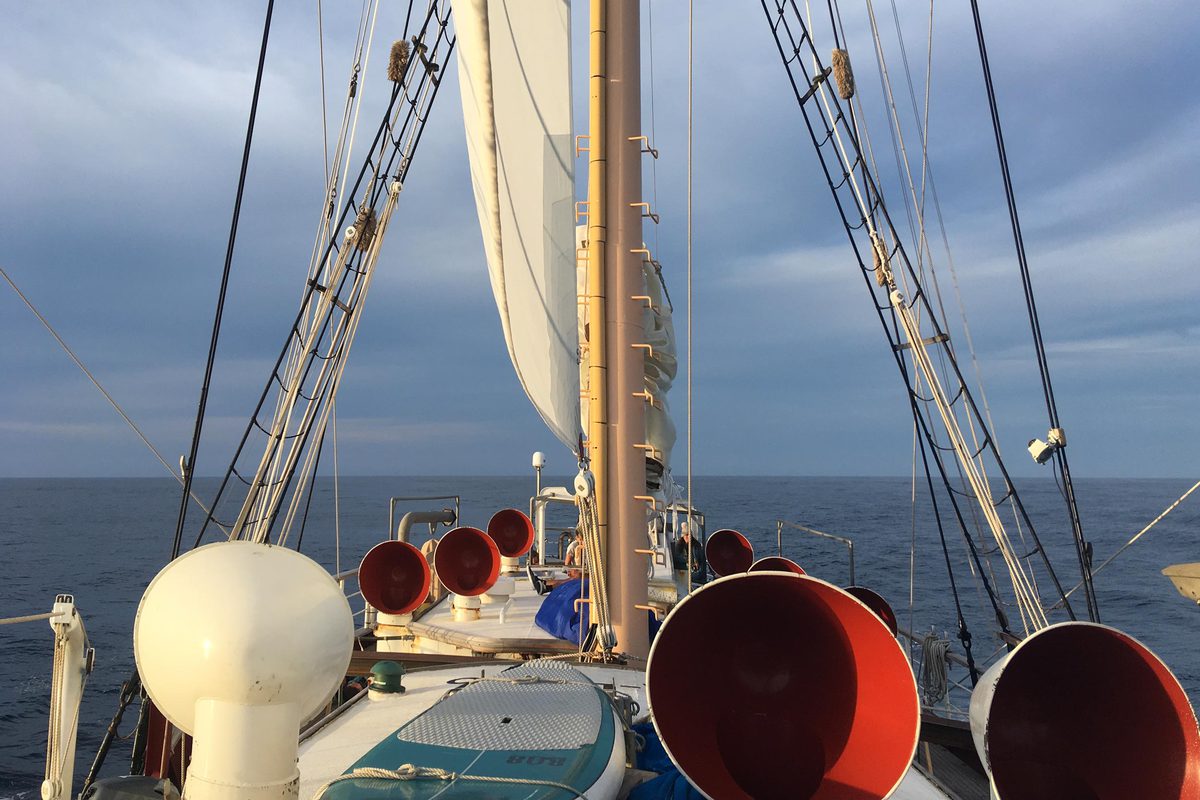
When traveling to other countries around the world, we need to be aware. It’s easy to see Polynesia as a vast tropical paradise full of soft, sandy beaches, beautiful sunsets and friendly indigenous peoples who are happy to entertain you with their culture. This, however, is not the reality of what Pacific Islanders are experiencing, and it’s important to acknowledge the history of struggles Pacific Islanders have experienced and how they have been taken advantage of in a variety of ways by white nations. We need to be respectful to the people and the cultures we visit, acknowledge and respect places of spiritual value and local customs.
The most striking thing that I learned, and what has stuck with me the most, is the importance of pronouncing words properly in the local language. While doing research in Tonga, one woman I spoke with had me practice the pronunciation of “’anga hinehina” (white shark) until I got it just right.
Q. What was your best experience?
A. My best experience has been exploring the island of Hunga Tonga Hunga Ha’apai, a four-year-old volcanic island. It is a spectacular place, with canyons made of crumbling ash and a vibrant green crater lake. The water surrounding it is some of the clearest water I have ever swum in, and the ocean is teeming with wildlife. Birds and vegetation are spreading from the neighboring islands of Hunga Ha’apai and Hunga Tonga, and coral reefs are recovering just beneath the ocean’s surface.
One bright and sunny afternoon, I was standing with three of my classmates on the southern shore, looking out at the ocean. I noticed a funny white patch on the water, and was just about to tell them about it when, seconds later, an adult humpback whale breached right before my eyes. Her calf breached after her, flying out of the water with such grace.
After watching the whales, I joined others at the crater lake where we would be investigating potential hot spots in the sediments of the shallow waters of the lake. We wouldn’t have even thought to look for them if one of my classmates, Grace, hadn’t fallen into the lake and thought, “this mud is unusually warm.” Since we didn’t have any instruments for measuring underwater sediment temperatures, we ended up using the next best thing: our hands and legs.
I waded into the lake, the water cool and refreshing, creating an escape from the heat of the sun. Using a thermal imaging camera, we pulled out the mud and took pictures as quickly as we could to get the most accurate readings possible. It turns out that Grace wasn’t just imaging things, and the hottest sediments we found were up to 118 degrees Fahrenheit.
I’m very fortunate to have gotten to visit Hunga Tonga Hunga Ha’apai, and I hope that this island is able to stick around for a long time. It really is a special place.
Q. How will you use this experience to further your education and career goals?
A. This experience has furthered my education and career goals by helping me figure out what I plan to do in the future. Working in the lab on the Robert C. Seamans showed me that I love doing research; but as much as I loved studying the ocean, walking around the forests in New Zealand made me realize that my future involves studying environments on land.
This is not to say, however, that I did not enjoy sailing. This trip will not be my last on a tall ship, and I hope to come back to SEA Semester and sail as a deck hand before going to graduate school, where I think I will study trophic cascades.
But we’ll see if any future experiences I have point me in a new direction.
Media Contact
University News Associate Office of University Communications
farisss@virginia.edu (434) 924-3778
Article Information
October 13, 2025
